上海交大赵大海关于新冠疫情第18次在电视台访谈评论:新冠肺炎世界大流行日趋严峻,中国不会第二次暴发
上海交通大学国际与公共事务学院博士生导师、上海交通大学-耶鲁大学卫生政策联合研究中心执行主任赵大海,自新冠肺炎疫情以来第十八次接受央视/上视直播采访。2020年3月27日21点30分,赵大海做客上海电视台新闻综合频道演播厅,在《新闻夜线》节目,对新冠肺炎世界大流行、美英意三国与我国疫情防控进行了解读和评论。
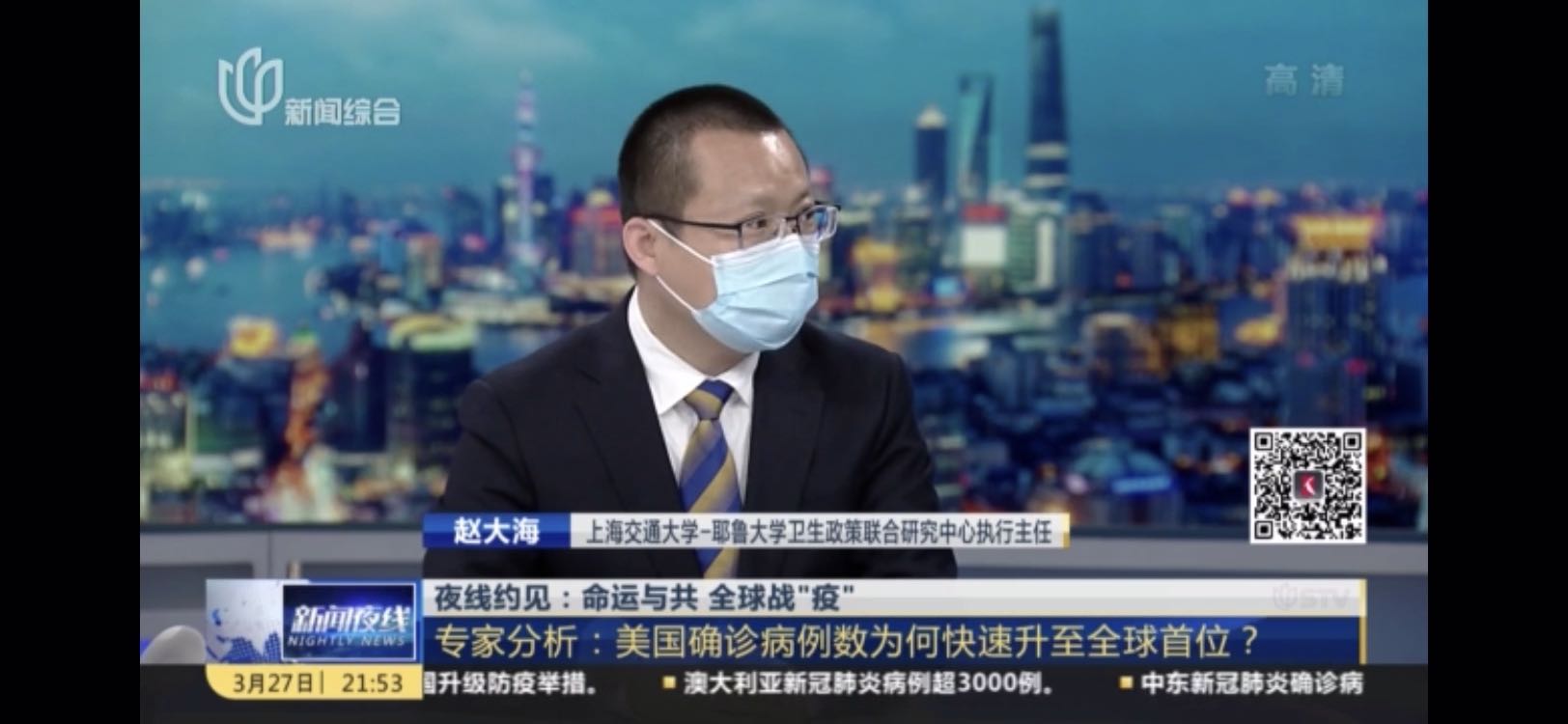
主持人:今天走进我们夜线约见演播室的嘉宾是上海交通大学-耶鲁大学卫生政策联合研究中心执行主任赵大海。我们先总体看一下全球疫情的走势,我们通过一个图来给大家看一下他最近一个时期的走势。从3月6号开始,几乎是一个指数级的增长,我们从3月6号到20万人,也是从10万到20万人,大概花了十二天左右的时间;但是从20万到30万人的时候只用了四天;从30万到40万人也只用了四天的时间,您从目前这个趋势来看,会不会这个坡度变得更陡啊?未来这个增加速增长的趋势会不会更为明显?
赵大海:是的。在至少短时间内来看的话,这个加速增长至少是没有放缓,应该还是会有一个进一步加速增长的趋势。
主持人:我记得上一次我们一起做节目的时候问您的第一个问题就是世卫组织说我们留下的窗口期已经不多了,我们窗口期还有多少?但是现在看来,应该说很多国家都没有抓住这个窗口期,美国,最近几天增长还是比较快的啊,我们来看这是美国的具体数据,尤其是最近几天,每天大概都是有接近一万多例,这样的增长啊,为什么美国这两天会有这么快速的一个增长的趋势?
赵大海:首先,目前所报上来的数据,是这个新增病例,每天是一万多,应该讲的是最近一段时间,美国联邦政府、各州级政府对于新冠肺炎疫情应该是比较重视的,检测能力也得到了比较大的改善。因此,现在的新增病例应该讲还是在消化原先的存量的阶段。
主持人:就等于这些病例实际上一直都在,只不过原来没有检测,没有检测出来这些病例的存在,从未来来看,您觉得美国的这种每天一万多,这种增长还会持续大概多长时间?未来结局什么样,是失控,还是说还是能够慢慢的把他给收住?
赵大海:首先,因为现在美国采取比较严格措施的州,还不是特别多。加州、纽约州,包括康州和伊利诺伊这四个州已经采取了包括封州在内的一些比较严格的措施,但是还有很多的绝大部分州依然没有采取非常严格的措施,因此,可以讲,如果这个检测能力到位的话,未来每天一万左右的这个新确诊病例还会要持续一段时间,但具体就要看美国的这个检测能力是不是未来还能跟上,包括一些州政府会不会愿意来开展这个大人群的核酸检测,因为有些州可能不一定愿意来做大人群的核酸检测。
主持人:为什么不愿意做这种检测?
赵大海:一方面,是经费的问题;另外一方面,美国各州情况还是有较大的区别,有些州,目前还是将疫情防控放在不是头等位置上,他们还考虑到其他的一些方面,比如说依然是以经济发展作为他们最重要的一个任务,因此,他们可能会刻意的不太愿意来做这个核酸检测等。
主持人:而且这次我们看美国好像在确诊当中啊,我们昨天也报道了,好像青壮年偏多一点,好像和我们所说的感觉,好像中老年相对病例多的情况不一样,这个和美国文化背景还是和其他的一些东西有关系?
赵大海:应该讲,影响因素会多一些。一方面,社交等这个场合里边,美国确实青壮年相比较于老年人而言,是更愿意参加一些社交活动,这个接触面可能确实要更广一些。另外一方面,核酸检测目前并不是一个相对比较全样本的核酸检测,这个核酸检测里边与老年人参与的比例本身就少也有一定的关联。
主持人:而且我们在电视节目当中看到好像觉得很多美国人,包括在欧洲啊,很多人都不习惯去戴口罩,也不喜欢戴口罩儿,这个是不是也是他们一个传统或者是他们的一个文化。
赵大海:确实是这样子,就是说至少是对美国人而言的,大部分的美国人确实是非常排斥戴口罩,确实是跟他们的文化有很大关系。当然也跟媒体的宣传,包括政府的宣传有很大的关系,因为在疫情暴发的早期,美国的主流媒体一般都是说对新冠肺炎的防控,勤洗手比戴口罩更有效。因此,再加上美国民众对于戴口罩的比较排斥,宣传又说勤洗手更有效,因此呢,就是戴口罩,在美国,现在目前为止依然不是很多。
主持人:那实际上我们也很关心另外一个人群就是在美国的咱们中国留学生的一个状况,关于留学生要不要回国,那实际上昨天呢,张文宏教授在和中国驻美大使馆相关的连线和留学生之间有一个交流,我们先来看看。我们看到张教授也说了,瞎混是主要的原因,就是刚才您所讲的可能社交是比较大的一个原因,而且不戴口罩,张教授也提到,他提到了这个,在美国都觉得风险很大,就现在怎么权衡这个关系,你觉得因为,既然风险大,肯定是想回到国家来的,回到中国来的,但是现在的一方面航班减少,同时在这个过程当中还有可能被感染风险,您觉得这个利弊之间需要做怎样的权衡?
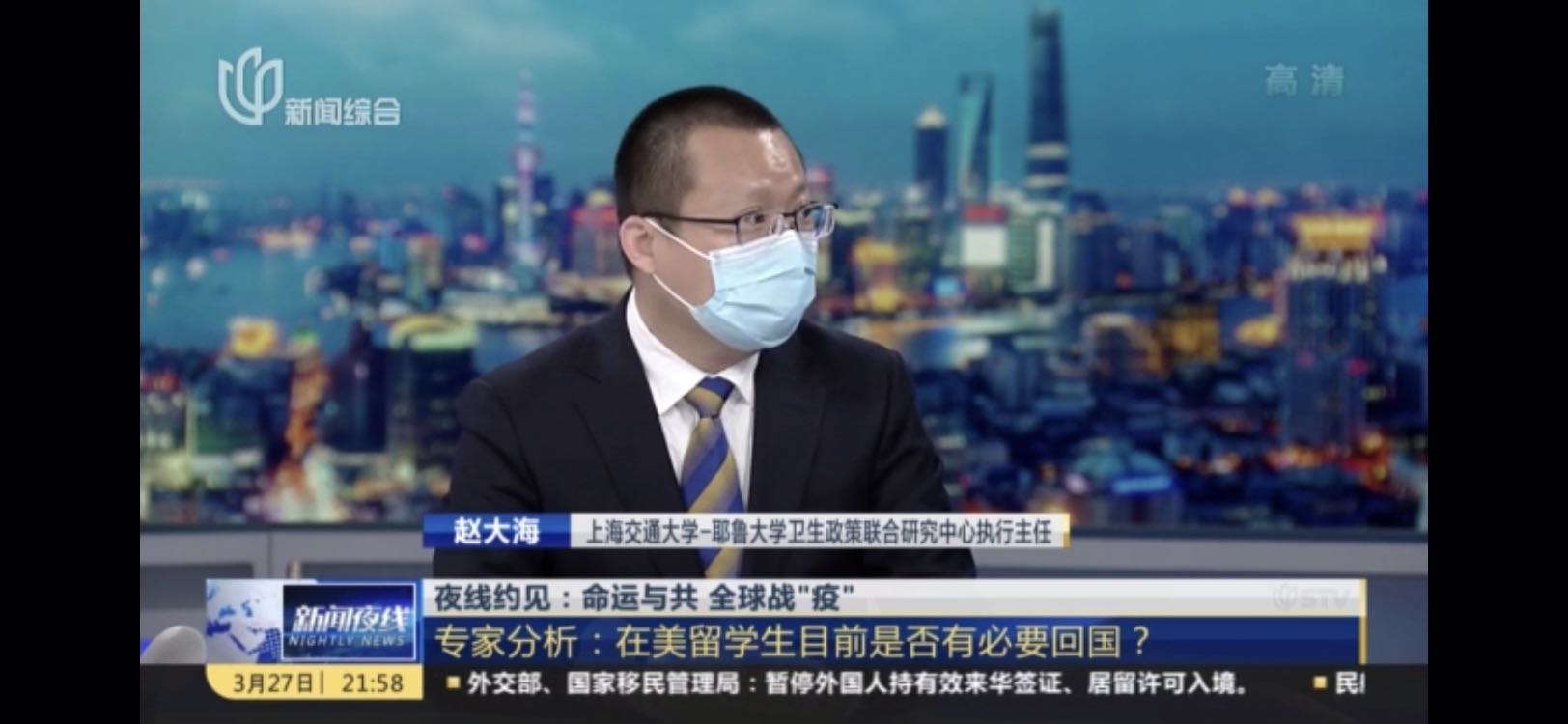
赵大海:对于在美国的留学生,首先,目前来看,不必过于恐慌。因为刚才我们也提到了美国的联邦政府在内,主要的一些州,中国留学生聚集的一些州,譬如说加州、纽约州都已经采取了相对比较严格的措施,包括尽可能要求民众待在家里不要出来。因此,中国的留学生,如果呆在寝室里边,或者说呆在家里边,如果非得要外出的话,一定要戴好口罩,只要在这样子的防护措施的前提下,倒无需非得要回国。现在美国各州的对大学的复课时间现在还没有完全定下来,不排除有些州比较早就已经开学了,即便返回到国内的话,他可能也会影响到开学等各方面的一些问题,另外机票现在也比较紧张。因此,我的建议是倒无需非得要回到中国来。
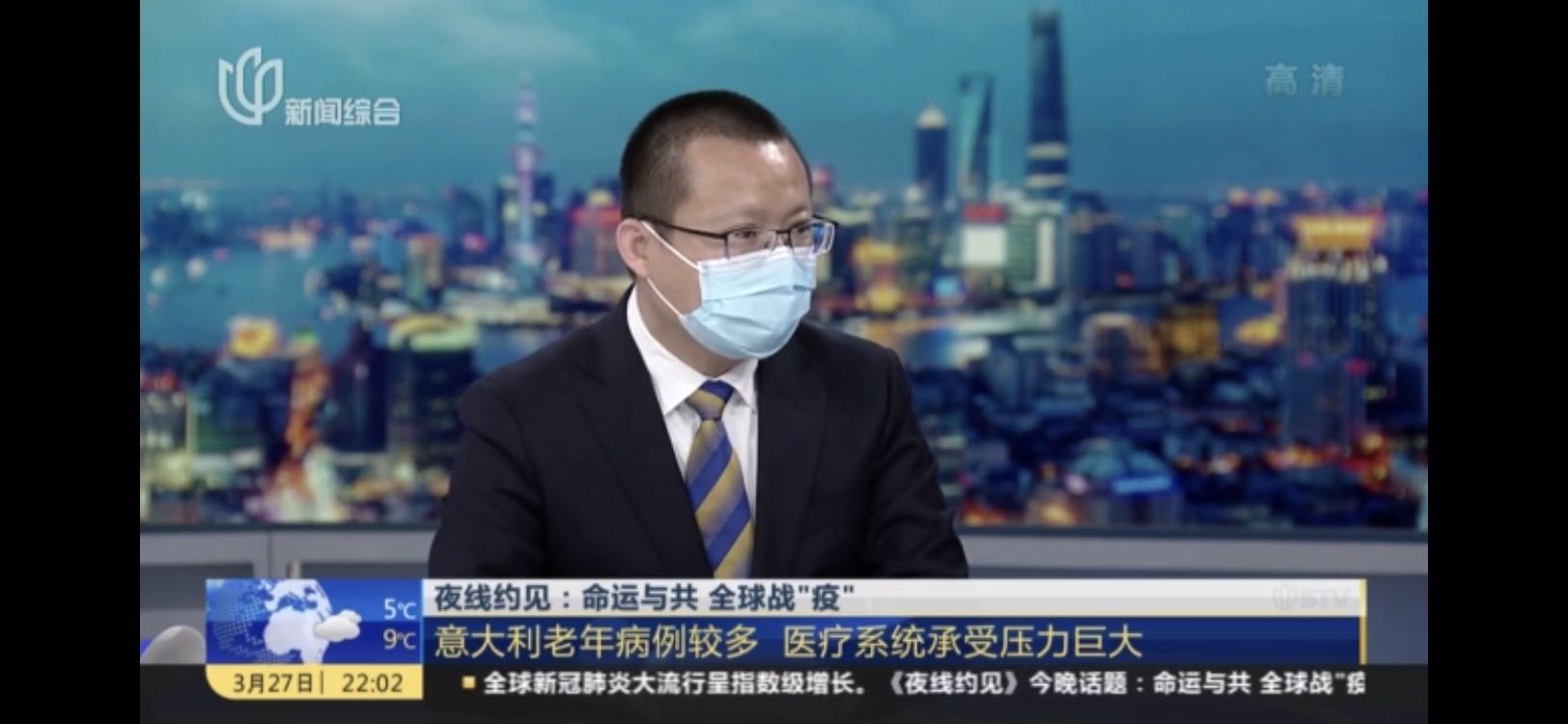
主持人:实际上在美国做好个人防护,这个也是非常重要的,相对来讲更重要一些,而且回国还有感染疫情的风险,包括这种再回去的话,能不能赶上开学可能也是问题,所以多方的利益的一个权衡,最终一个这样的,你给出这样一个您的建议,刚刚我们说的是美国的情况,接着我们刚才在新闻还讲了一个意大利,意大利,我们现在看到他的人数虽然不是最多的,但是他的死亡率依然很高,大概10%,这个是远超咱们中国的死亡率在全球也是排第一的,为什么意大利有这么高的一个死亡?
赵大海:意大利的死亡率目前来看是世界上最高的,主要的原因不外乎以下几个,第一,就是意大利老年人群感染新冠肺炎病毒的比例比较高,这可能跟意大利的人口老龄化比较严重有关;跟意大利老年人群喜欢社交,愿意到户外参加一些聚集的活动,应该也是有关联的;另外一个就是意大利的医疗系统面临着非常大的压力,现在轻症的患者基本上还是居家的治疗;即便如此,对于重症患者,在意大利的医院里面也是比较难以有能力,有足够的医务人员来应付这些重症患者,因此,就导致了现在意大利新冠肺炎的病死率非常高。
主持人:那这个病死率未来您觉得还会维持在这样一个高位的水平吗?
赵大海:是的,目前来看因为意大利的新冠肺炎每日新增的确诊病例依然还是在四五千左右,每天在增长,因此意大利的医疗系统目前来看并没有一个非常大的改进,因此10%的病死率没有很好的迹象显现会得到降低。
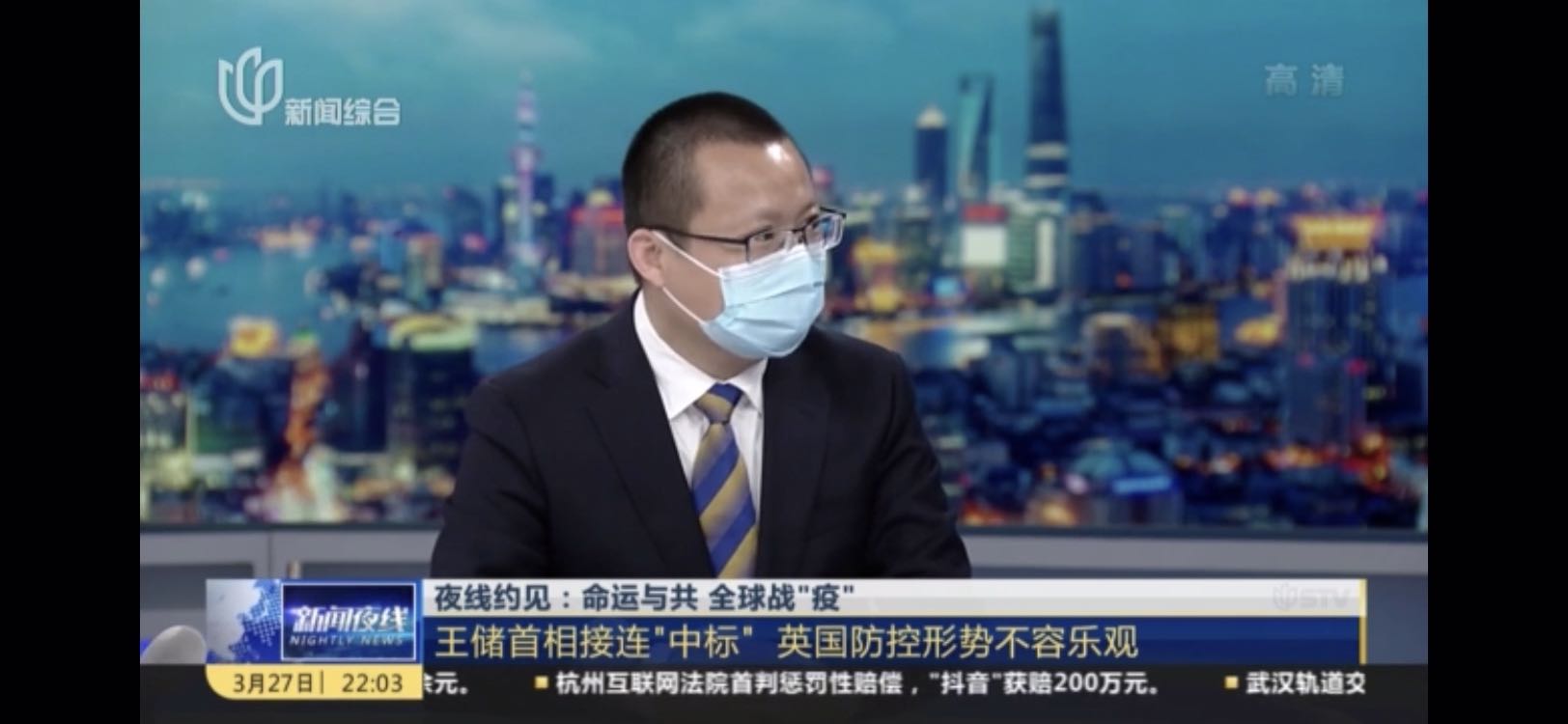
主持人:那刚刚我们说的是意大利的情况,今天一下子让大家都非常关心英国的一个情况,因为前两天王储确诊了,今天首相确诊了,紧接着今天晚上我们又知道这个卫生大臣确诊,按理来讲我们觉得像这一类人应该是这个防控意识最强,防护手段应该比较多的一类人群,却纷纷确诊,这是不是意味着英国可能他这个实际情况,目前表现出来的可能会严重一点。
赵大海:是的,我们应该是持跟主持人一样的观点。这也跟原先英国一直采取的人群免疫的这种抗击新冠肺炎的方法有很大的关系,因此也导致虽然现在上报的数据不是很多,对于英国而言,应该讲,未来如果英国采取大面积的大人群的核酸检测的话,应该这个数字会比现在要更为严重,更为严重很多。
主持人:更为严重很多,如果真的是出现这种情况呢,就据您了解,英国的医疗资源是能够承担这种更为严重的一个数字吗?
赵大海:英国目前的医疗资源应该是无法承受的,至少是非常困难的,应对这个新冠肺炎,而且是大量的新增的确诊患者的话,不只是对英国,对任何一个国家也都是一个非常大的挑战。
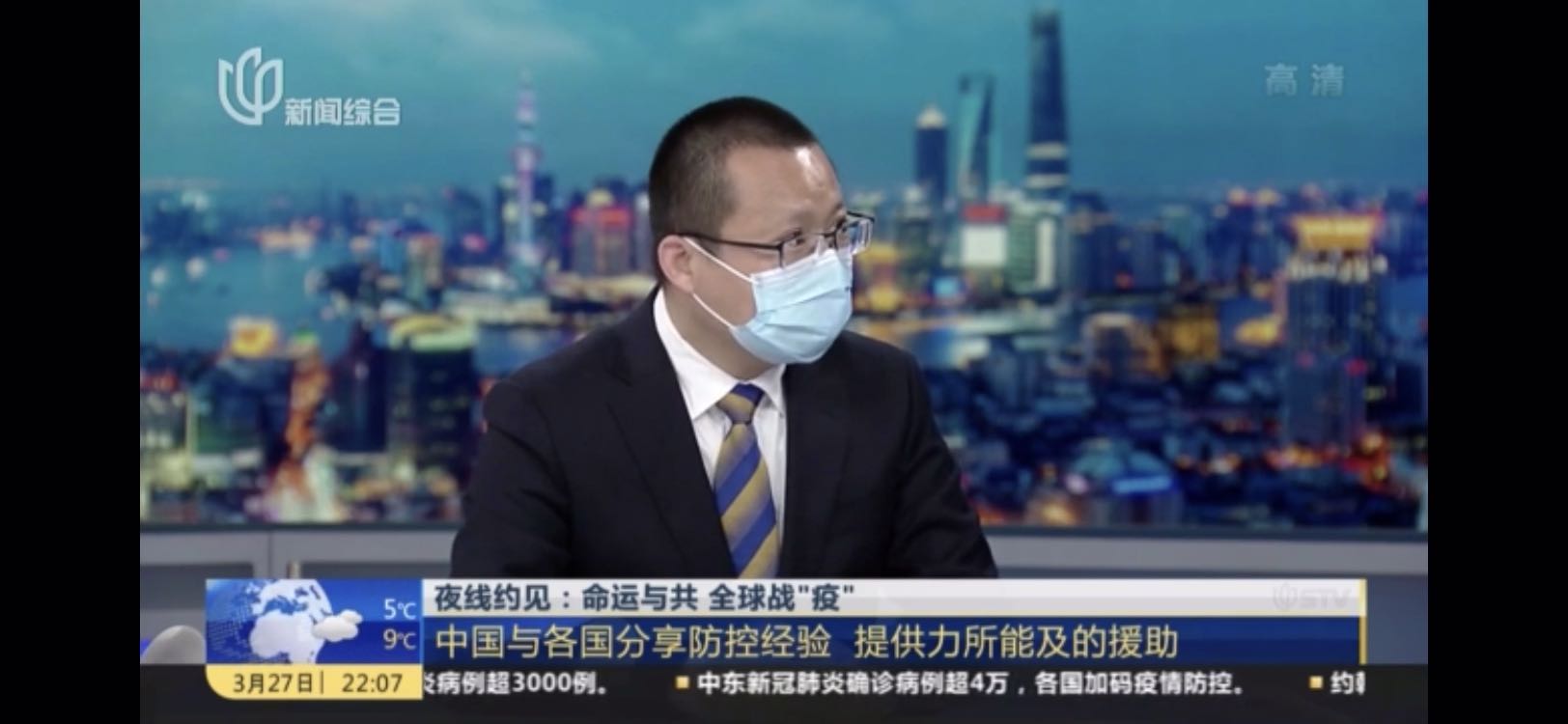
主持人:那我们说完了世界各国的这个疫情之后,我们回头可能要关注中国,很重要的一个工作就是外防输入,现在有一种说法,包括世卫组织,有官员说中国有可能会出现第二次爆发,就这种可能性大不大,有多大?
赵大海:就我个人而言,我还是比较乐观的,我认为,中国到目前为止并没有迹象能够证明中国会发生第二次爆发。主要原因:现在的新增确诊病例,中国大陆的完全是境外输入的,而且并没有发现这个境外输入的患者对本土居民的感染者,因此我们可以证明现在各城市对于境外人员的管控应该效果还是不错的。另外一个方面就是上海、北京等城市包括民航总局对于疫情防控进行了升级,譬如说上海从几个小时以后,两个小时以后,所有的境外人员必须要进行14天的集中隔离,而不再居家了,除非是特殊条件会允许居家之外,绝大部分的应该是原则上都要集中隔离,包括北京也在提升境外人员的防控措施,在这样的比较严厉的,应该讲非常严厉措施的保障的前提下,我们应该有理由相信中国不会发生第二次的新冠肺炎的爆发。
主持人:包括昨天我们看到这个公安部,包括出入境管这个国家移民局出台的这个持有中国签证的也不能够入境了,这是针对外国人员的,以及调整航班,这些措施实施之后,是不是对于口岸的入境的这个口岸的防控的检测的压力也会变得小很多。
赵大海:是的,因为原先的政策,就是没有在调整政策的时候,每天入境人员应该在两万五千左右;新政策实施后应该会降到五千左右。这样对于各城市对境外人员的防控的压力有大幅度的降低。在这样的前提下,各城市就有精力和能力来对于新进入的境外人员采取更为严厉的管控措施,包括全闭环的管理,包括上海即将实施的对所有境外人员集中隔离。因此,应该讲也是为了保障中国不会发生第二次暴发所采取的一些必要的防控措施。
主持人:那我们一方面看到我们要防止境外疫情的输入,但是中国作为一个负责任、有担当的大国,在这样一个疫情全球蔓延的趋势之下,您觉得我们对其他国家可以做些什么?
赵大海:客观讲,因为中国在比较短的时间内,让新冠肺炎疫情得到了非常好的控制,因此,我们就积累了比较好的经验。首先,我们可以向世界各国来分享我们疫情抗击的经验,特别是,我们制定了六版的防控方案,还有七版的新冠肺炎病例的治疗方案。这些方案,现在已经翻译出了多国的文字。我相信这些应该会对其他国家的新冠肺炎疫情的防控,包括治疗应该会起到很好的借鉴的作用。
主持人:实际上更多分享我们的经验,提供给其他国家来共同战胜这个全球的防疫的阻击战,也谢谢赵主任走进我们演播室。
供稿者:交大-耶鲁卫生政策联合研究中心
日期:2020年3月28日
Dahai Zhao' 18th comments on TV during the Pandemic: There Shows no Evidence for a Second Outbreak in China in Spite of the Increasingly Severe Global COVID-19
Dahai Zhao, a doctoral supervisor at the School of International and Public Affairs of Shanghai Jiaotong University and executive director of the Shanghai Jiao Tong University-Yale University Joint Research Center for Health Policy, has been interviewed by CGTV / DFTV for the eighteenth time since the COVID-19 pandemic. At 21:30 on March 27, 2020, Zhao commented on the prevention and control of COVID-19 pandemic in the United States, Britain, Italy and China.
Anchor: The pandemic has been an exponential increase since March 6. It took about 12 days from 100,000 to 200,000 of confirmed cases; but it took only 4 days from 200,000 to 300,000, and 4 days from 300,000 to 400,000. Will this trend of rapid growth increase in the future?
Zhao: In a short period of time, at least, this accelerated growth will not slowed down. And there should be a trend of further accelerated growth.
Anchor: Many countries have not grasped the window period. Why do you think that United States have such a rapid growth trend in the past two days?
Zhao: Recently, the US federal government and state governments have paid more attention to the COVID-19 situation, and the detection capacity has been greatly improved. Therefore, there should still be at the stage of digesting the original stock.
Anchor: In the future, do you think that this kind of growth in the United States will exceed 10,000 per day, and how long will this growth continue?
Zhao: California, New York, including Connecticut and Illinois have adopted stricter measures, including lockdown, but many other states have not adopted very strict measures. Therefore, if the detection capabilities are in place, new diagnosed cases of about 10,000 will continue be for a period of time. Specifically, it depends on whether the detection capability of the United States can keep up in the future, including whether some state governments are willing to carry out nucleic acid testing for large groups of people.
Anchor: Why don't they want to do this test?
Zhao: On the one hand, it is a question of funding; on the other hand, the situation in the US is still quite different. Some states currently do not take epidemic prevention and control at priority. They also consider other things, e.g., economic development is their most important consideration, so they may be reluctant to do many nucleic acid tests.
Anchor: Confirmed cases in United States were many young and middle-aged adults, why is the situation different from where we were thinking that there are more cases of elderly people?
Zhao: On the one hand, young adults are more willing to participate in social activities than older people. On the other hand, nucleic acid testing is currently not as safe as expected, and the proportion of elderly people participating in it is small.
Anchor: Many people in US and Europe are not willing to wear masks. Is that related to their culture or tradition?
Zhao: This is indeed the case, that is to say, at least for Americans, most of them are comparatively repellent to wear masks, and it has a lot to do with their media's propaganda, including the government's propaganda. In the early days of the outbreak, the mainstream media in the United States generally said that washing hands frequently was more effective.
Anchor: Should Chinese overseas students return home? At present, there are fewer flights and the risk of infection is more likely in the process. What do you think this pros and cons?
Zhao: At present, foreign students don't have to be too panic. Some states in US where Chinese students gather, such as California and New York, have already adopted strict measures, including asking people to stay at home as much as possible. Chinese students must wear masks if they have to go out. Under such protective measures, they do not have to return to China. At present, the resumption time for colleges and universities in various states in the US has not yet been set. Some states might have started school earlier. Even if they returns to China, they may be affected by some problems such as the beginning of school. In addition, air tickets are now not much available. Therefore, my suggestion is there is no need to return to China.
Anchor: Although the number of confirmed diagnoses in Italy is not the highest, the mortality rate is still very high, about 10%. Why is there such a high death rate in Italy?
Zhao: First, the proportion of elderly people in Italy infected is relatively high, which may be related to the aging Italian population. Second, the elderly in Italy are willing to go outdoors to participate in some gathering activities. Third, the Italian medical system is under great pressure. Patients with mild conditions are treated at home; even though, there were still not enough medical staff to treat severe patients, leading to the death rate is very high.
Anchor: Do you think this fatality rate will remain at such a high level in the future?
Zhao: Right now, the number of newly diagnosed cases in Italy is still around four or five thousand every day, which is growing every day, and the Italian medical system has not seen a very big improvement at present. So situation of the fatality rate shows no signs of underlying reduction.
Anchor: Heir to the throne was diagnosed two days ago. The Prime Minister was confirmed today, followed by the Minister of Health. Does it mean the actual situation in Britain may be a little more serious?
Zhao: Yes, I take the same views as you. This also has a lot to do with the method of combating COVID-19 that has been adopted by the British population. In the future, if the United Kingdom adopts nucleic acid test for large populations, this should be much more serious than it is now.
Anchor: Can the medical resources in the UK afford more serious figure?
Zhao: Very difficult, at least. To combat with this pandemic and treat an increasing number of newly diagnosed patients, not only for the UK, but also for any country is a big challenge.
Anchor: There is a saying that China may have a second outbreak because of a large amount of imported flow. Is this unlikely?
Zhao: I don't think China has so far shown any evidence for a second outbreak. The new confirmed cases are imported from overseas, and the infection of local residents by overseas imported patients has not been found. Therefore, the control of imported infection is proved to be effective. Another aspect is that cities such as Shanghai and Beijing, including the Civil Aviation Administration of China, have upgraded measures of prevention and control. Under such very severe measures, we should have reason to believe that China will not have a second outbreak of COVID-19.
Anchor: After foreigners cannot enter with a valid visa, and new regulations for adjusting flights are implemented, the pressure of entry inspection at ports will become much smaller.
Zhao: The number of immigrants per day should be around 25,000 before the policy was not adjusted, and be reduced to about 5,000 after new regulations. This has greatly reduced the pressure on cities to prevent and control imported flow. Under this premise, cities have the energy and ability to take stricter measures on newly-entrant overseas personnel, including full closed-loop management. Therefore, we could say China will not experience a second outbreak under such prevention and control measures.
Anchor: As a responsible country and accountable government, what do you think we can help to other countries under the global spread?
Zhao: Objectively speaking, China has been able to control the COVID-19 epidemic in a relatively short period of time, we have accumulated better experience. First, we can share our experience in combating the epidemic with countries. In particular, we have developed six editions of prevention and control programs and seven editions of therapeutic schedules. These programs and schedules have now been translated into many languages. I believe these should play a good reference role in containing COVID-19 in other countries.
Contributor: JYHP
Data: Mar. 28, 2020

